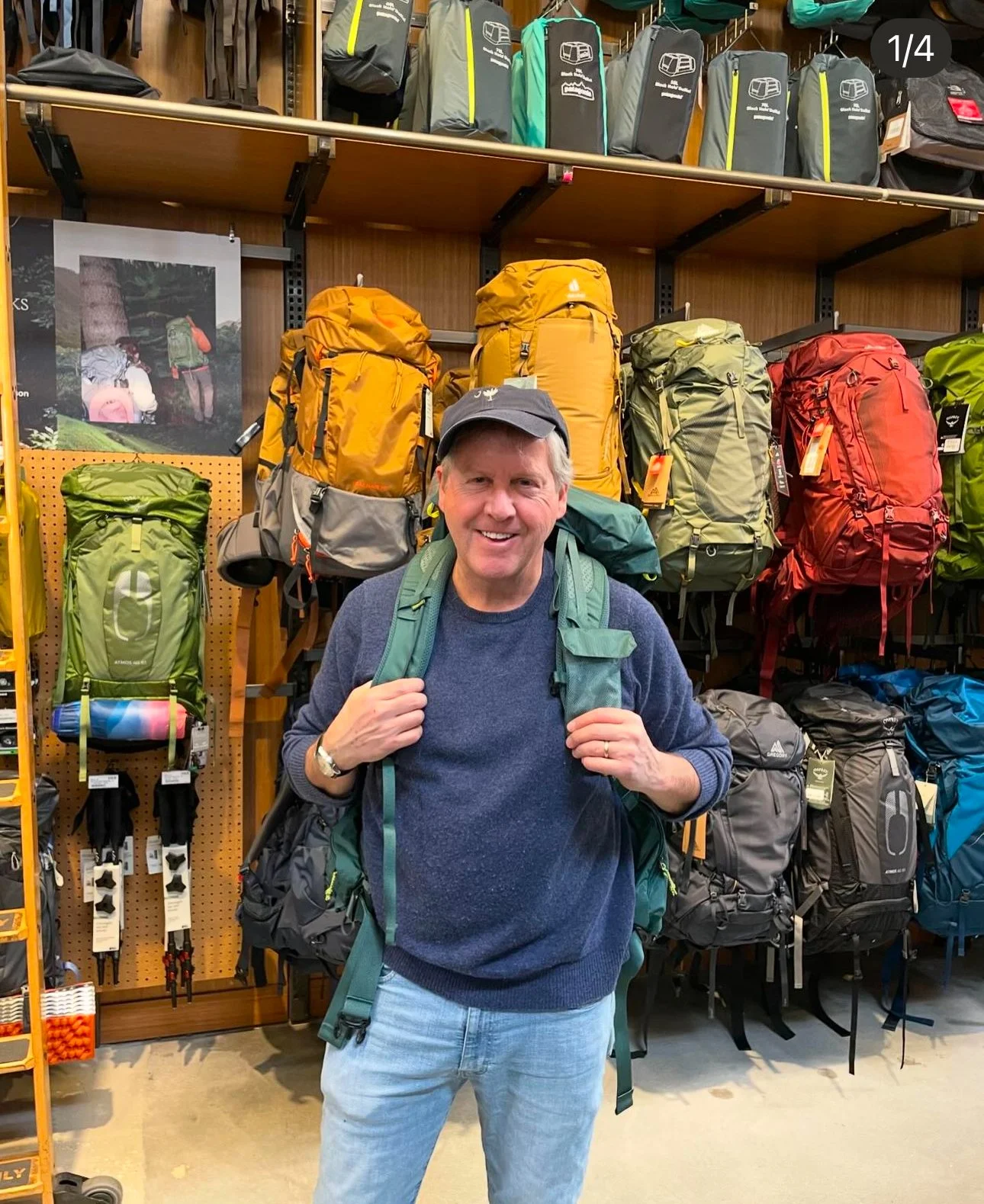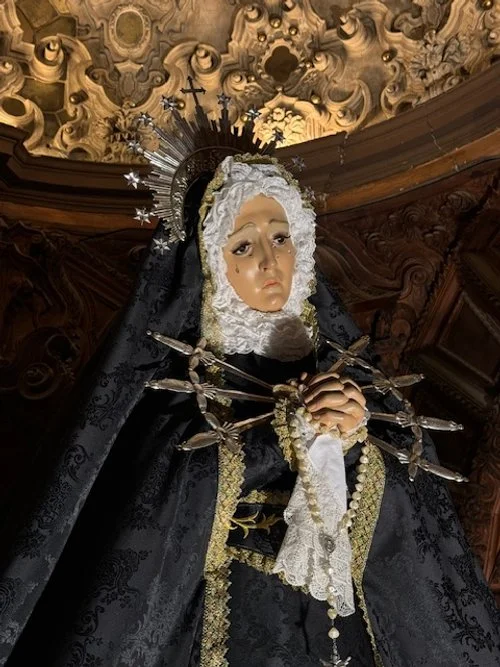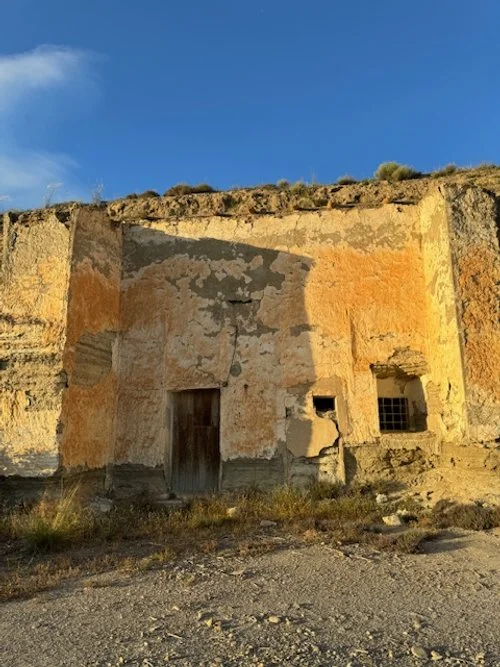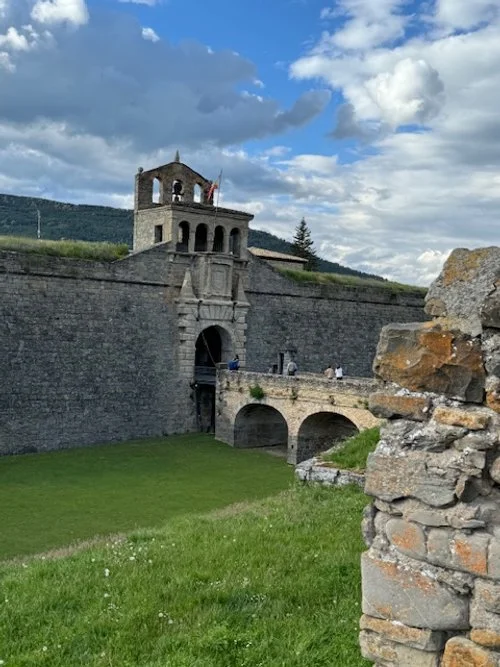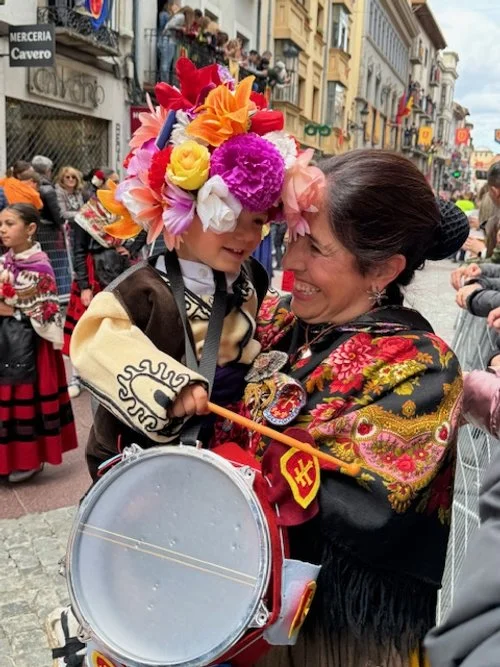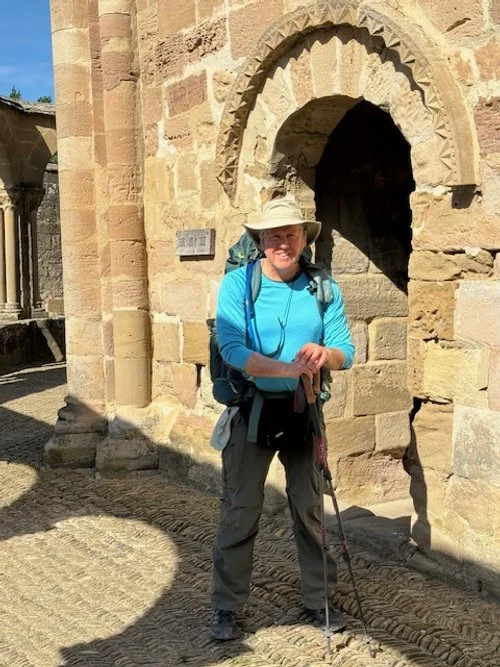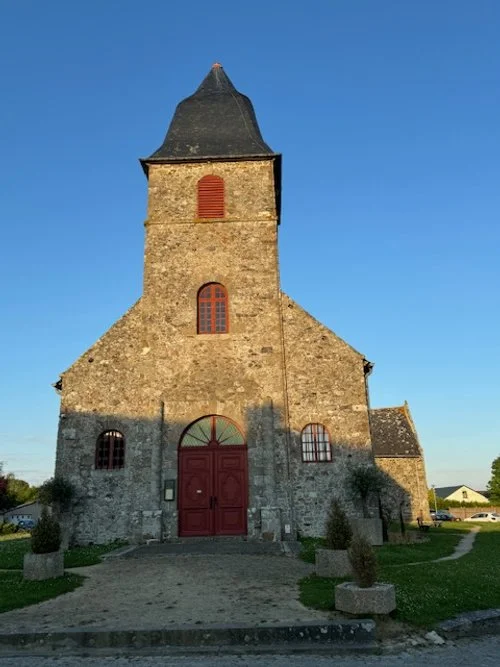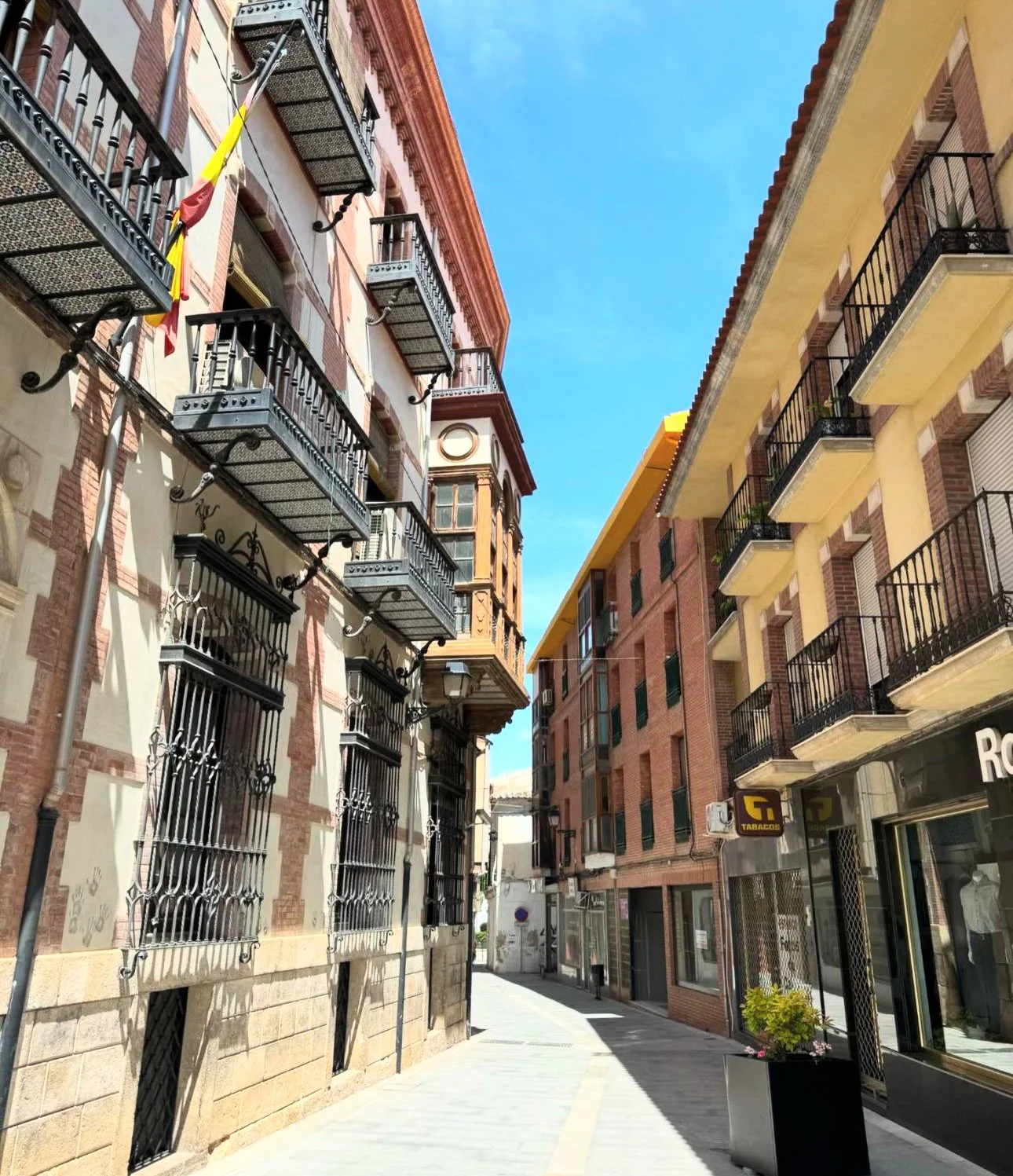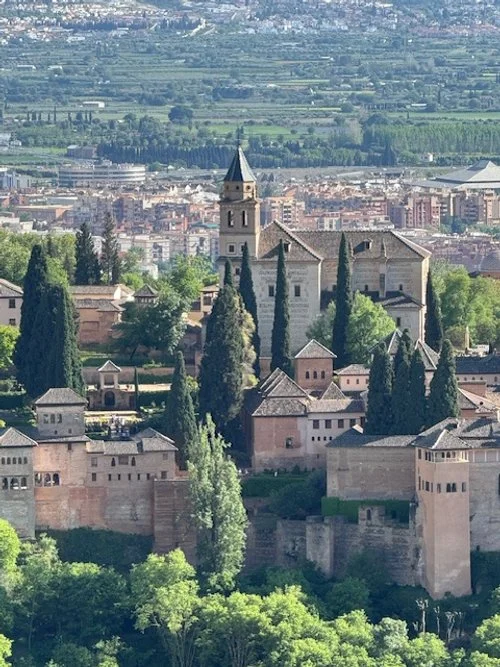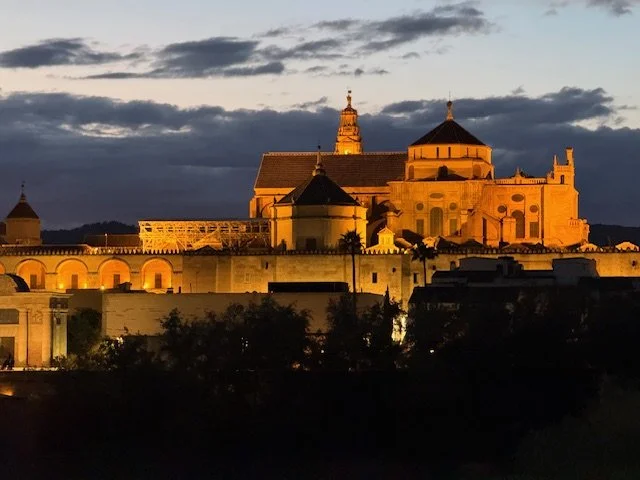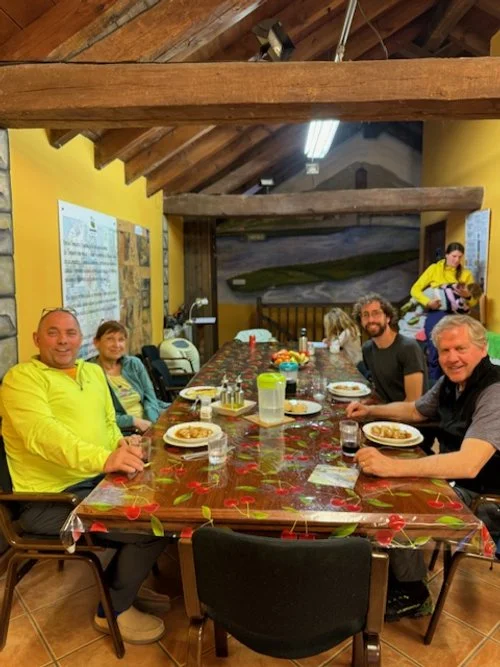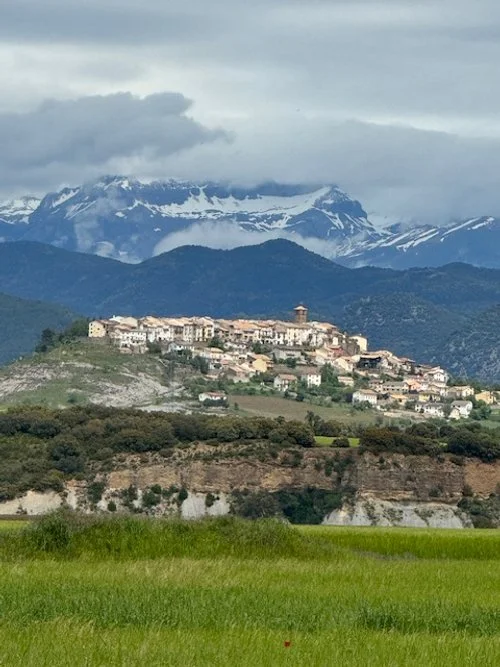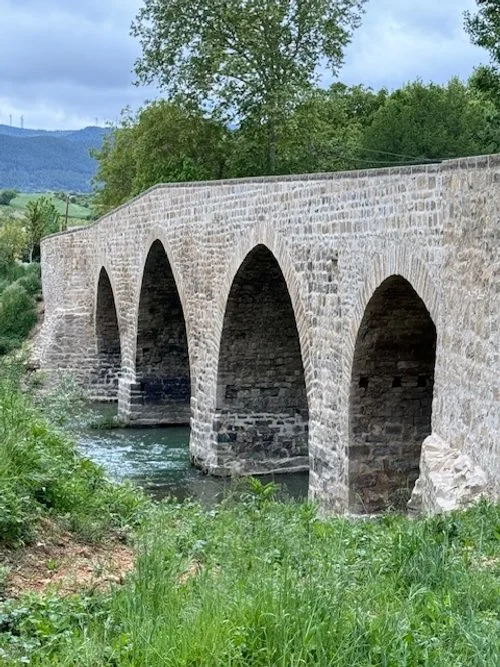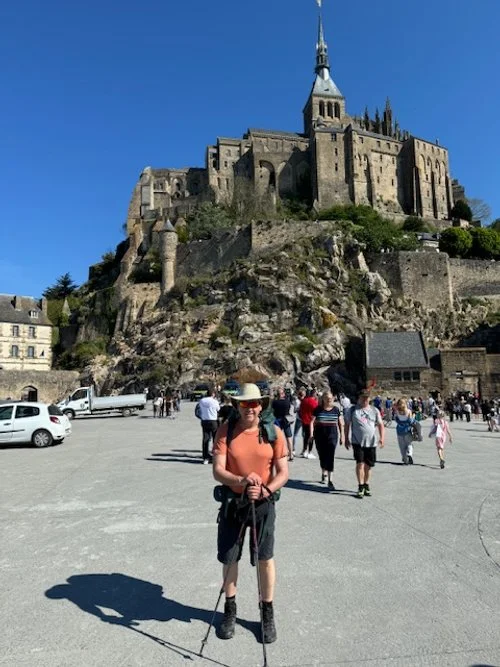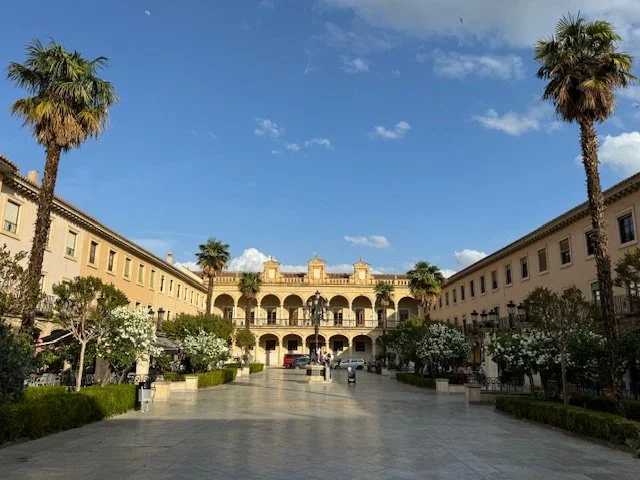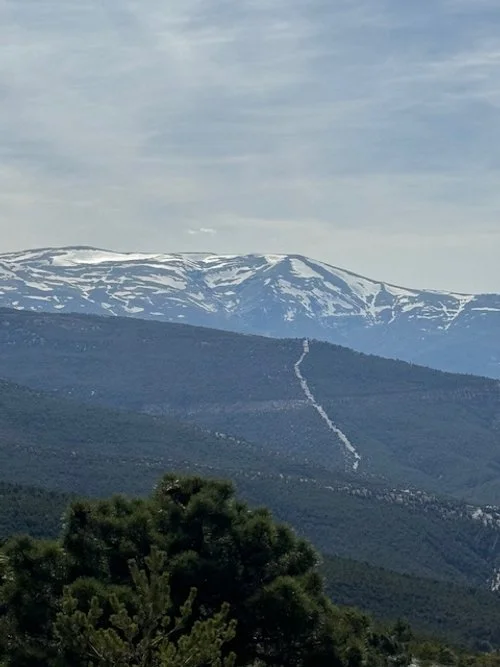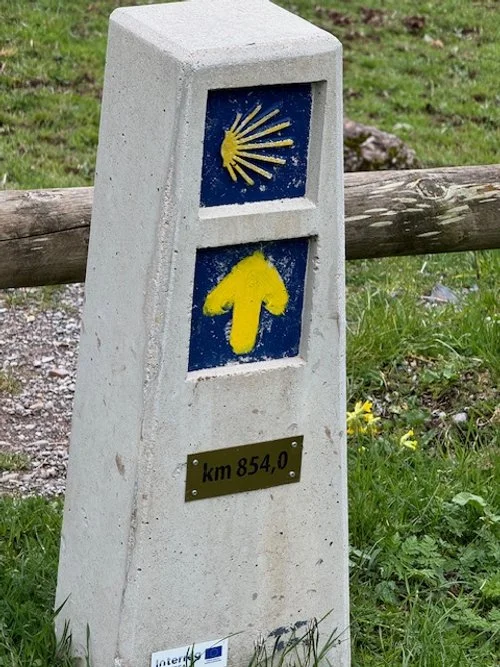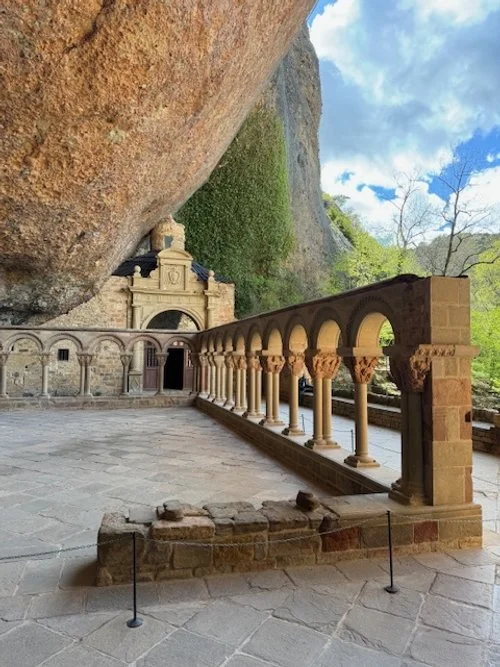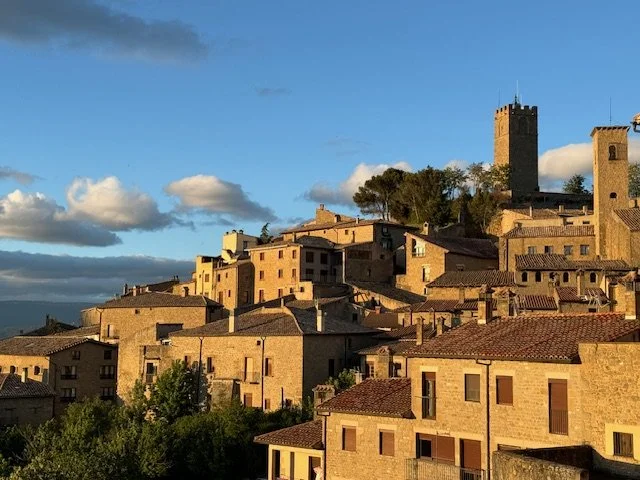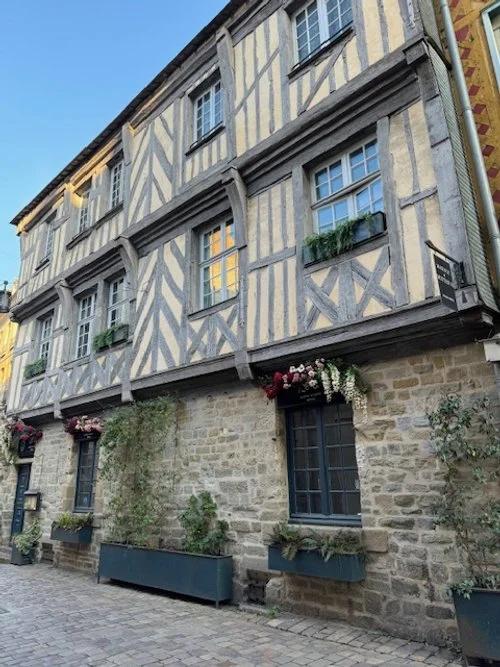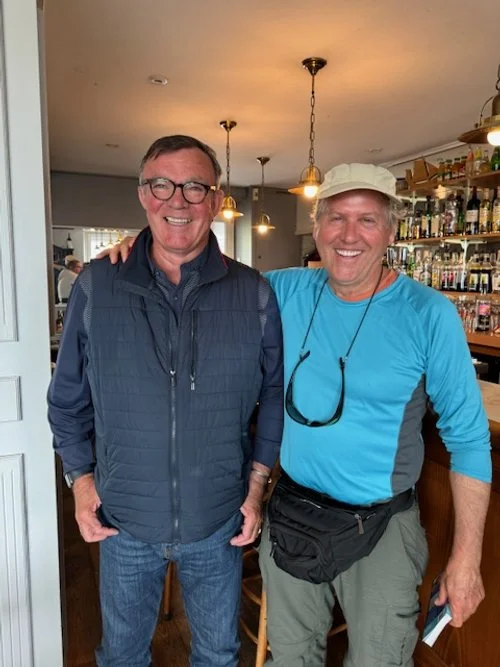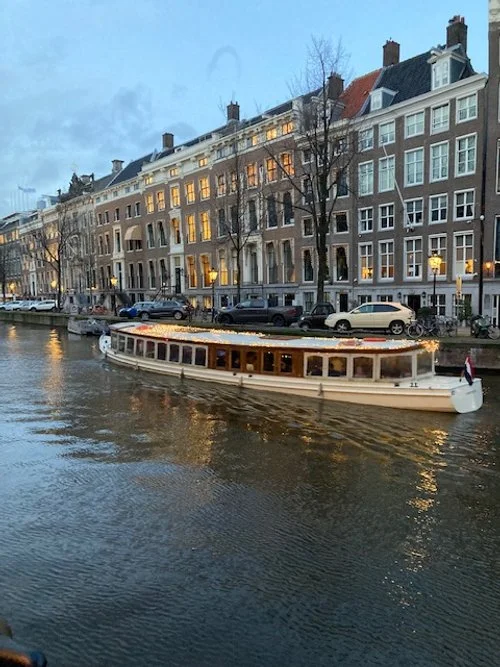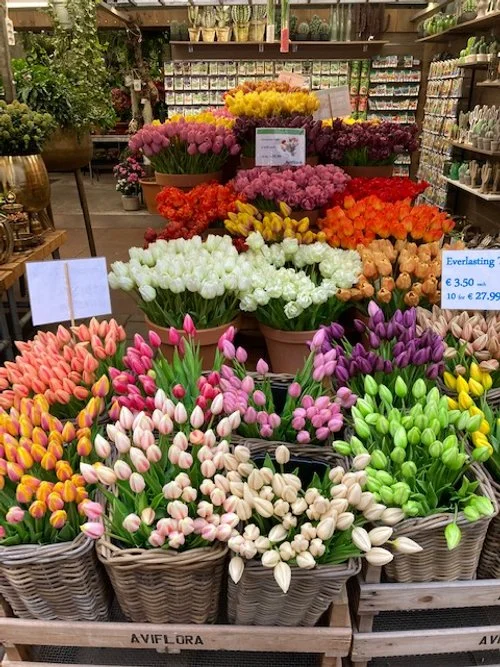Let’s Get Started…
Tuesday, April 16
Everything matters. Everything weighs something. Each ounce adds up. Any Camino like any journey begins with preparation - checking routes and destinations, buying new gear and equipment, taking stock of what’s still in good shape, and deciding what goes and what stays behind. My backpack will be my house for the next 90 days. Everything that I want and need must fit inside it. I weighed it at 22 pounds - not as good as I had hoped but better than I feared. I arrive tomorrow in Andalusia. Can’t wait to set my feet back on Spanish soil!
Granada
Sunday, April 21
After attending church and visiting the Chapel of Our Lady of Sorrows in Baza, we traveled to Granada, passing a horse drawn carriage on a main road. We explored the catacombs near Sacromonte in Granada today dating back to the first century, where San Cecilio - one of the two patrons saints of the city and a disciple of Santiago - St. James the Greater - was martyred in the first century. I love exploring sites like this that few Americans and tourists take time to see or even know about. Granada is one of my top ten favorite cities in Spain. It’s got a great vibe, incredible history, architecture, food, and so much to offer and do. Earlier in the day, I played my first doubles game of pádel, and we prevailed. It’s a great game and is incredibly easy to pick up. We ended the day by watching El Classico - the twice a year soccer match between El Real Madrid and Barcelona. I have probably spoken 40 hours of Spanish since arriving less than five days ago. This is the ideal way to learn a language.
Baza, Andalusia
Friday, April 26
Baza was an important city in this region of Andalusia long before Granada was established. Today, Granada has over 200,000 residents and another 150,000 in the surrounding region. Baza has only 21,000 residents, but an incredibly interesting heritage. It has been ruled by Phoenicians, Iberians, Visigoths, Romans, and Arabs, before being reconquered by Christians 500 years before the Christians reconquered Granada, which is only an hour away by car, in 1492. The history here is layered and rich. A highlight yesterday was visiting the casa/cuevas (cave houses) carved into the hillsides outside of Baza. At one very large cave, we had a drink in a casa rural that has a bar, restaurant, and seven rooms for rent, one of which has room for eleven guests to sleep. I met Antonio David, one of the local priests, and had a nice conversation in the plaza mayor of Baza.
Camino Aragonés
Wednesday, May 1
A brilliant day on the Camino Aragonés highlighted by meeting William Bates and his family in Jaca. His mother was co-chair of the Search Committee that recommended me to the Vestry to become the Rector of Christ Church Greenwich. Jaca is a lovely town of 13,000 that swells to 55,000 in the winter for skiing and in the summer for hiking and enjoying the outdoors. It’s a marvelous place. It was hard to leave the albergue in Canfranc. It was perhaps the best that I have ever stayed in. We walked over 23 kilometers today, which was perfect for a second day on the Camino. I have greatly enjoyed reconnecting with my dear friend Charles Schwalbe and sharing the Camino with him.
Santa Cruz de la Serós
Saturday, May 4
You meet the most amazing people in albergues. Manuel (Manu) and Juan José (Juanu) walking companions. Juanu (dressed in black) is almost completely blind. He said that he is one of five people in Spain who has become almost completely blind from stress. They are both in great spirits and good shape. They will walk 25 kilometers over rocky uneven terrain. Amazing! After saying goodbye to them following breakfast, I returned to Jaca to watch the First Friday of May Fiesta Parade, which commemorates a battle won by the troops of Count Aznar in 760 A.D. against the Moors. Four horsemen traditionally lead the parade each carrying a pike with the head of a Moorish king stuck on top. Yes, this is not politically correct, but neither is Spain. Over 800 citizens in this city of 10,000 take an active role in the parade. It closes with the singing of a dramatic hymn followed by lots of eating, drinking, and dancing. If the Spanish love anything, they love fiesta!
Walking the Camino Aragones
Wednesday, May 8
Walking the Camino Aragones was a good challenge. I’m not game to walk 20 plus miles in a single day in the mountains or hills anymore, but had to do so today to finish what I started. The Camino Aragones is very beautiful and very solitary. Most of those who walk it have already walked the Camino Frances and are looking for a new and different challenge. I’ve met several people a decade older than me who are in spectacular shape. It’s humbling to see their ability, resilience, and trail smarts. Walking such a distance with your head down watching the trail makes you feel much closer to nature. I avoided stepping on insects, snails, plants, live and dead snakes and vipers, horse, cow, and sheep excrement, orchids, wild flowers, enormous grasshoppers, and dead field mice and moles. Everything seemed like a kindred soul. I often think of St. Francis while walking the Camino. I finished my walk in Puente la Reina - the last stop on the Camino Aragones and the place where all four major Camino in France intersect. This pueblo is famous for its Roman bridge which every pilgrim who passes through this town on the Camino crosses. It’s time to make my way to France.
Brittany, France
Saturday, May 11
Brittany is enchanting. It reminds me of my childhood spending summers in Chatham on Cape Cod, except the history along the Bay of Mont-Saint-Michel extends back 4,000 years. The walking is flat. I spent yesterday afternoon riding a bicycle to Dol-de-La-Bretagne and Mont-de-Dol-de-Bretagne, and picking up things to eat for dinner as all the restaurants are closed Sunday evening, and then visiting the lovely town of Dol-de-Bretagne, where the Stuarts of Scotland originated from and where Chateaubriand studied for four years. I’m reading, watching, listening, and absorbing as much as I can. Brittany is magical!
Trekking from Cancele to La Guimorais
Wednesday, May 15
À magical day of trekking from Cancele to La Guimorais past secluded beaches, German bunkers from World War Two, and rock outcrops. The reward for eight hours of walking was watching this magnificent sunset while eating a healthy dinner.
Baza, Andalusia
Thursday, April 18
I’m trying to catch up on sleep and adjust to the time change after arriving with little sleep. This is a true Spanish immersion as I’m living in Baza, Spain - a pueblo of 21,000 people - for several days with my Spanish teacher and his family. I’ve had a chance to have long, interesting conversations especially about the history of Spain with my Spanish teacher’s father and brother, both of whom are very knowledgeable. Spanish history fascinates me incredibly. Baza is off the beaten path. Few tourists come here. It’s a perfect opportunity to improve my Spanish, which needs much improvement. They cut off the ends of words in Andalusia. Instead of saying “adios” and “gracias,” they say “adio” and “gracia.” It’s fascinating how languages morph over time in differing places.
Granada Continued
Tuesday, April 23
Granada, Spain is unbelievably rich in its religious heritage ranging from the Moors to the Reconquista by Isabel and Ferdinand - los Reyes Católicos. It’s so much to take in.
Cordoba
Monday, April 29
My Spanish teacher and I drove from Granada to Cordoba. He gave rides to two Spanish students studying in Cordoba. Inside the car they spoke rapid fire Spanish. It was another good experience in language learning. Cordoba is the city of the Jewish and Muslim philosophers Maimonides, Averroes, and Avicenna, who were among the greatest scholars of their day. The latter two helped to translate the works of Aristotle into Latin, creating an intellectual breakthrough in Europe that led to Thomas Aquino’s producing his Summa Theologica. It was the greatest learning center of Europe in its day. Its mosque with a cathedral built inside it by Christians who conquered the city is one of the wonders of the world. Julio Romero de Torres - one of my favorite Spanish painters - spent his life in Cordoba, first designing posters for bullfights, and later capturing the world of Andalusia like no other artist. His former home now houses his museum. I’m now aboard a train heading to Zaragoza, where I will meet my oldest Spanish friend and we will go hiking in the Pyrenees.
Santa Cecilia, Spain
Thursday, May 2
It rained all morning. Said farewell to my dear friend, Charles Schwalbe, who joined me for two days of hiking. Logged a meager 15 kilometers. Recited the Jesus Prayer in English and Spanish and listened to a podcast on Hemingway in Spain as I slogged through the rain. Arrived at albergue, showered, ate a great lunch, and slept like a log. Dried everything off. Enjoyed the company of fellow pilgrims. The body can only do so much.
Undués de Lerda
Sunday, May 5
Last night I slept in Undués de Lerda - a village of 30 people with many second homes for people who seek a house in an utterly quiet setting in the countryside of the Spanish Pyrenees, but who are rarely here. I was the only pilgrim in the albergue last night. Life is simple. Wake up. Pack up. Eat breakfast. Trek and trek. Find an albergue. Unpack. Shower. Siesta. Read a bit in Spanish. Have dinner. Sleep well. Repeat. The countryside is lovely. The people are friendly. Life is good on the Camino Aragones. This was how the Camino Frances was 45 years ago before it was discovered and became so famous and over traveled by people from around the world.
La Foz de Lumbier, Spain
Thursday, May 9
La Foz de Lumbier is an amazing place to walk through the gorge and watch incredible birds, especially Egyptian vultures, soaring on wind currents. This gorge is located on a variant path off the Camino Aragonés between Sangüesa and Monreal, Spain.
Mont Saint Michel
Sunday, May 12
Walking the Camino Aragones was a good challenge. I’m not game to walk 20 plus miles in a single day in the mountains or hills anymore, but had to do so today to finish what I started. The Camino Aragones is very beautiful and very solitary. Most of those who walk it have already walked the Camino Frances and are looking for a new and different challenge. I’ve met several people a decade older than me who are in spectacular shape. It’s humbling to see their ability, resilience, and trail smarts. Walking such a distance with your head down watching the trail makes you feel much closer to nature. I avoided stepping on insects, snails, plants, live and dead snakes and vipers, horse, cow, and sheep excrement, orchids, wild flowers, enormous grasshoppers, and dead field mice and moles. Everything seemed like a kindred soul. I often think of St. Francis while walking the Camino. I finished my walk in Puente la Reina - the last stop on the Camino Aragones and the place where all four major Camino in France intersect. This pueblo is famous for its Roman bridge which every pilgrim who passes through this town on the Camino crosses.
Guadix
Friday, April 19
Guadix is the rival city of Baza. For hundreds of years, there has been a festival called “el Cascomorres,” which is incredibly tribal and as important for these two communities of 20,000 as the running of the bulls is for Pamplona. Google YouTube Redbull Cascomorres to learn more. Today, I played pádel for the first time. It was great fun. It’s a major sport in Spain and is picking up across the United States.
El Castillo de Calahorra
Thursday, April 25
A man’s home is his castle. El Castillo de Calahorra sits in an incredibly strategic location overlooking the Sierra Nevadas. We visited it after spending the day roaming the Alpujarras, a mountainous region dotted with small villages of white houses nestled in the hillsides. We were in search of Yegén, a pueblo of 200 houses where the English author and hispanista Gerald Brenan - author of South to Grenada - lived for seven years. What we discovered was like walking into a novel as we conversed with residents who actually met and knew him. Dinner was served at 10:45 pm after a long day.
Arrived in the Pyrenees
Tuesday, April 30
My good friend Charles Schwalbe from Spain and I started the Camino Aragonés this afternoon after he picked me up at the train station in Zaragoza. This is one of the least chosen caminos - the way less traveled as Robert Frost would say. We arrived in the Pyrenees, picked up our credentials, which are like passports allowing you to stay in albergues (which resemble youth hostels). The albergue where we are staying tonight is in the tiny village of Granfranc (population 50). The albergue is wonderful. It is clean, new, and well-constructed and well-maintained for pilgrims. It’s a donativo, which means that there is no required charge. Pilgrims merely leave a donation signifying what the stay has been worth to them. Because we didn’t get hiking until 4 pm, we only hiked 15 kilometers, which is a perfect start for a first day. We trekked up to Somport, which lies on the French/Spanish border and hiked back down, passing many bunkers from the Spanish Civil War or World War One, lots of wild flowers and orchids, rushing streams, singing birds, and a handful of pilgrims from Brazil, Sweden, France, and Australia - all of whom are sleeping here tonight. While walking, my mind flutters with all kinds of thoughts as memories flash by like a life review and giving me time to ponder the significance of many moments in the past.
Camino Aragonés
Friday, May 3
Today, I walked backwards without a backpack and just my walking sticks heading in the direction where I had come from yesterday in order to visit three ancient monasteries off the beaten path of the Camino Aragonés. The town of Santa Cruz de la Serós with a population of 100-150 is charming. The romanesque monastery there is lovely. From there I took the much longer main road by accident instead of the very steep but much shorter Camino path leading up the mountain to visit the new and old monasteries of San Juan de la Peña. The old monastery dates to the 11th century and the new monastery dates to the 12th century. The old monastery is where many of the kings of Aragon are buried. It’s carved right into the wall of one of the Pyrenees mountains. The ancient religious stone carvings and capitals never cease to amaze me, especially those from the Romanesque period. It took me six hours to reach all three sites, but it was worth it. Having worked hard to get there, I rewarded myself with a taxi ride back to my albergue. One of the big surprises was seeing the Women’s Tour de España pass immediately outside the old monastery in Santa Pedro de la Peña. These brilliant athletes were racing at great speed down the mountains where I had just walked and were carrying on in spectacular fashion. Sometimes I wonder why I hike these caminos, and at other times I wonder how I could not be drawn to walk them.
Undués de Lerda, part 2
Monday, May 6
Last night I slept in Undués de Lerda - a village of 30 people with many second homes for people who seek a house in an utterly quiet setting in the countryside of the Spanish Pyrenees, but who are rarely here. I was the only pilgrim in the albergue last night. Life is simple. Wake up. Pack up. Eat breakfast. Trek and trek. Find an albergue. Unpack. Shower. Siesta. Read a bit in Spanish. Have dinner. Sleep well. Repeat. The countryside is lovely. The people are friendly. Life is good on the Camino Aragones. This was how the Camino Frances was 45 years ago before it was discovered and became so famous and over traveled by people from around the world.
Rennes, France
Friday, May 10
It’s WONDERFUL to be back in France! Rennes is lovely and feels like Paris 50 years ago. It is Brittany’s largest city with a population of 200,000 - 60,000 of which are students. There are cafes galore with students and locals conversing and enjoying themselves. I ate dinner at Estime - a fabulous restaurant in Rennes with great food and terrific service. I finished the Camino Aragones in Puente la Reina, where it merges with the Camino Frances, which I first walked in 2011. On my last day I met a man from Longview, Texas, whose wife died suddenly. He’s walking the Camino to try to figure out how to live his life without his bride of 45 years. She asked him to take her ashes to places she’d never been. So, he’s scattering them along the Way (the Camino). We had a prayer together before I left to catchy train. He was inspired to walk the Camino by the Episcopal priest in Longview, who walked the Camino ten years ago.
Bretagne, France
Tuesday, May 14
When you walk you notice little things - snails coupling on a walking path, insects, small animals, roses, and much more. The mind becomes more attentive to creation and indeed we feel more connected to all created life. I find myself reflecting on St. Francis of Assisi and trying hard not to step on any creature, whether it be an insect, spider, or snail. I stopped to have a half hour conversation with a retired dentist who is now a bird watcher. He’s seeing birds that normally don’t appear in Bretagne and suspects that climate change is changing migration patterns. I stopped in a bar/restaurant and a local owner of a moule farming business bought me a coffee. We spoke for an hour. He introduced me to everyone who came in as his American friend. Speaking French allows me to enter deeper into the experience of being here. I learned from Remy that 80 % of the oysters and moules in Europe are harvested in France and most of them in the bay where I was walking along. The world is full of riches and wonders.



